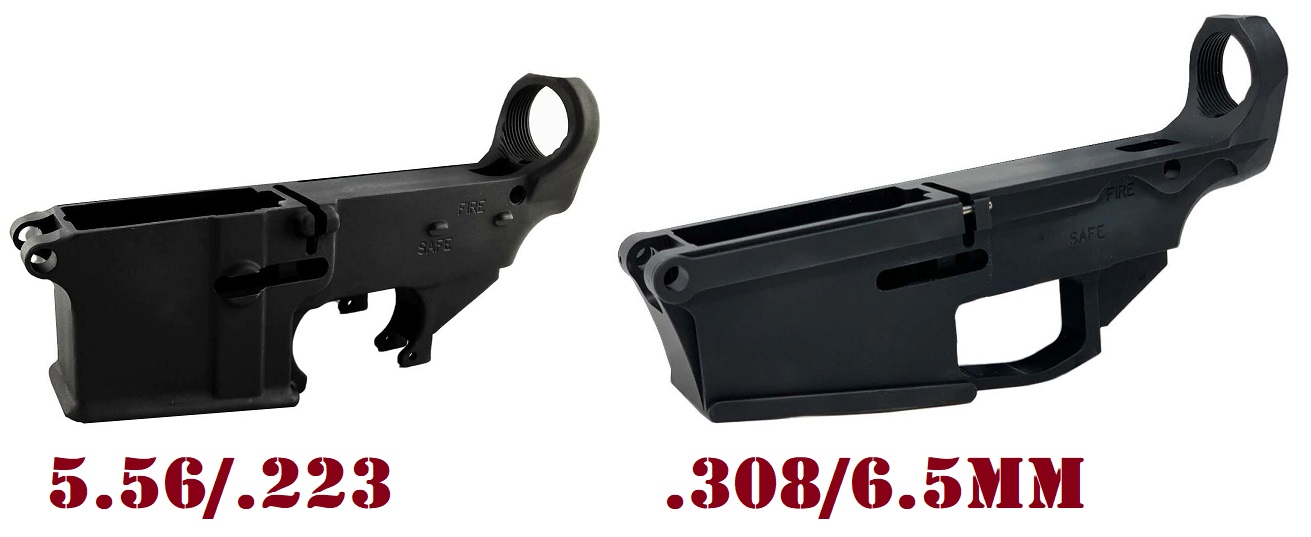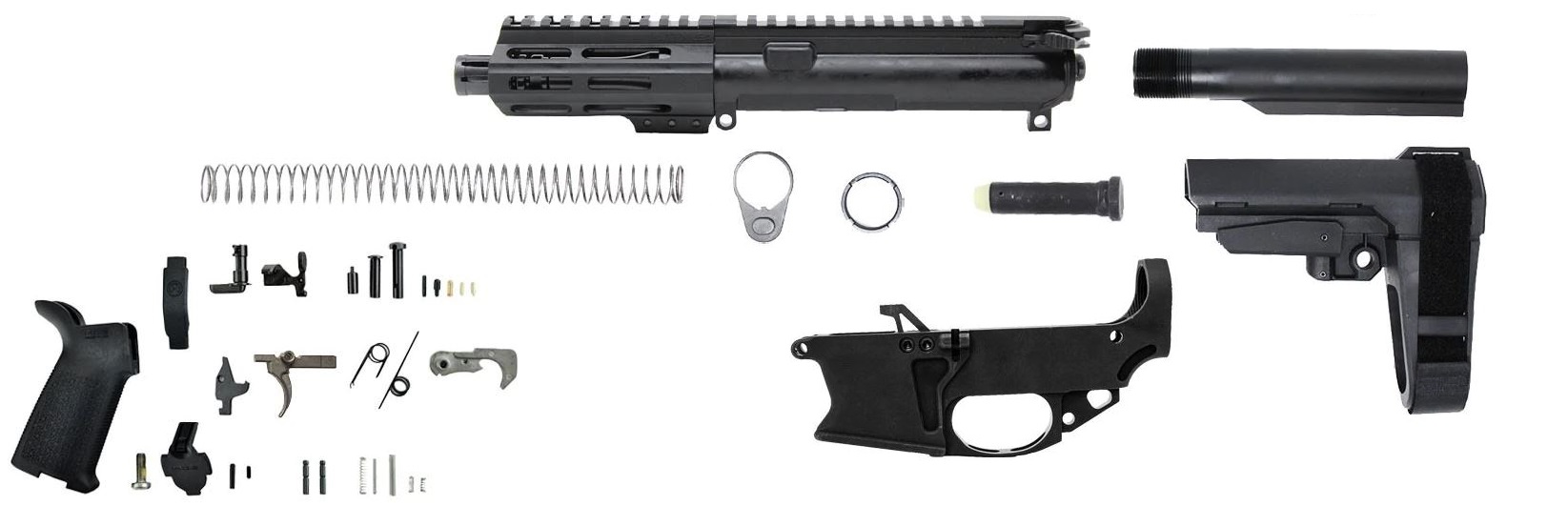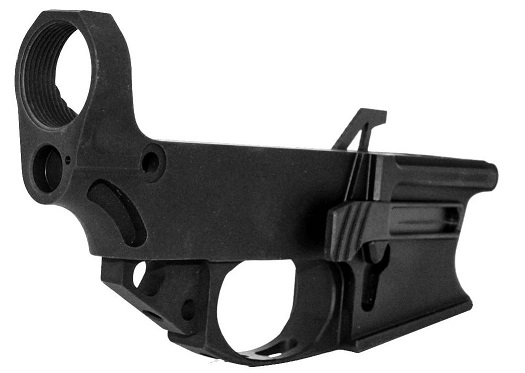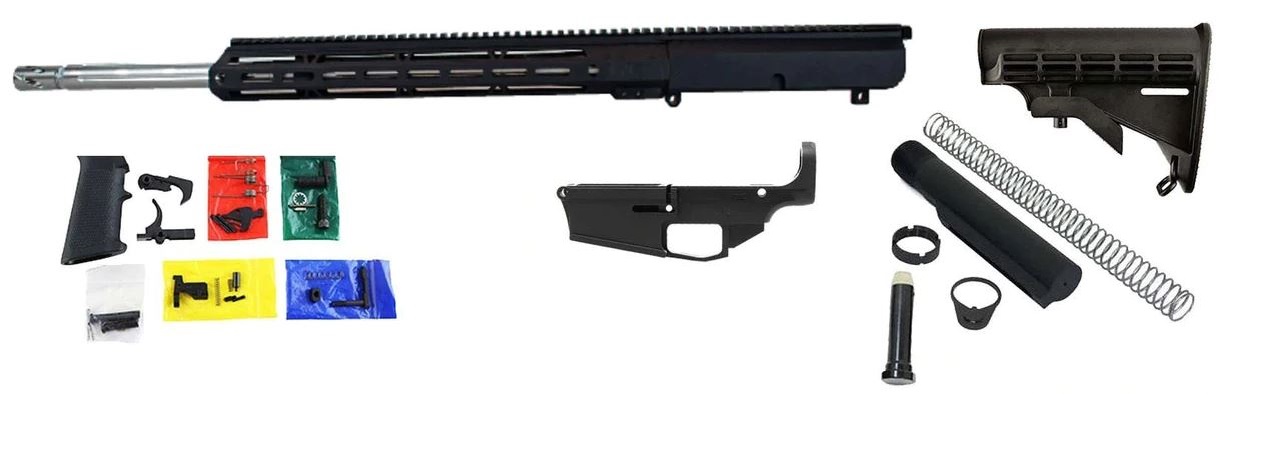AR Platforms: AR-9 vs. LR-308 vs. AR-15
Posted by Gun Builders Depot on Dec 4th 2020
When Eugene Stoner developed the AR-15 in the 50's, he probably didn't think his rifle would evolve to comprise a bunch of calibers and new configurations. Well, that's exactly what's happened. The black rifle's become so popular it now boasts a dozen or so cartridges. You've seen new builds referenced like the AR-9, LR-308, and 6.5mm. Let's compare them all so you have a better idea of what the AR platform can offer you.
AR Receivers: 22-cal vs. 30-cal

The AR-10 came first, and it was designed to shoot .308 rounds. Later, Eugene Stoner developed the smaller .223-caliber AR-15. Today, these two receivers' general designs are used for the modern AR's variants.
It's important to note one thing: The current .308-cal receivers are based on ArmaLite's AR-10, but with minor changes made to their shape and dimensions. They're officially called DPMS LR-308 receivers instead. More on that later. Let's cover the .22-cal receiver variants first.
AR-15 Variants
AR9 Carbine / Pistol (9mm lower)

Let's get the unique one out of the way first: The AR9 is technically an AR-15 variant, but it uses a slightly modified lower receiver. This 9mm 80% lower provides an example:

It has a modified magazine well and magazine catch/release, made to use all Glock magazines instead of the typical 5.56 mags. It also has an ejector preinstalled, since the regular 5.56/.223 bolt carrier group can't be used. Even though this lower receiver looks different than the AR-15's lower, it uses the same parts kit, trigger, hammer, safety, and other components that aren't preinstalled.
Blowback vs. Gas
The new ejector is required because the 9mm cartridge doesn't use a gas system like the typical AR-15. The 9mm burns most of its powder inside the breech. So, all that energy simply drives a modified 9mm bolt at its face, no gas tube or gas key required. The 9mm bolt is the same diameter as a 5.56 bolt and uses the factory recoil spring. It also fits inside the unmodified AR-15 upper receiver and factory buffer tube.
Common Configuration
AR9s typically get built as pistols, not rifles. That's because the 9mm cartridge was made for short barrels. At 9", the AR9's velocities is just about optimized. Some shooters still build 16"-barreled 9mm guns. This squeezes out a few more FPS in velocity for reaching maximum distances. No matter which loads you're shooting, 9mm benefits from a 1:10 twist rate above all others.
Want to know more? Here's the Full AR9 Build Guide.
300 Blackout AR-15 (5.56 lower)
(7.5" 300 BLK Pistol Kit pictured)

The 300 Blackout AR variant uses the regular old 5.56 lower receiver. In fact, the only thing different for this variant is the barrel itself. The larger .30-cal barrel still mates with the factory upper using a regular barrel nut. The gas system, lower parts kit, bolt, buffer, and all other parts remain the same.
Gas System Length
The biggest factor to consider with 300 BLK is the gas system and buffer weight. Since this cartridge is designed to be fired four ways (suppressed, un-suppressed, either subsonic or supersonic), the gas system needs to be dialed in just right.
Common Configuration
Most 300 BLK guns work best with a barrel measuring 7.5" to 10.5". To ensure all loads cycle reliably, a pistol-length gas system is all but required. Supersonic loads enjoy a slower 1:9 twist rate, while subsonic loads work best with a 1:7 twist rate. The 1:8 rate provides a great compromise and stabilizes both loads.
This 300 Blackout Build Guide covers it more.
6.5 Grendel AR-15 (5.56 lower)
(20" Grendel Rifle Kit pictured)

6.5 Grendel is one of the most high-performing rounds you can shove into the 5.56 receivers. It uses a long barrel and is capable of reaching distance of 600 meters or more. Anything bigger, and you'll be upgrading to the LR-308 receivers. Thankfully, for its heft the 6.5 Grendel still uses all the typical AR-15 parts, minus the barrel and gas.
Gas System Length
The Grendel uses bullets that weigh about twice as much as the AR-15's .22-cal loads. It also produces more energy, about 1,850 ft-lbs versus the .22 loads' 1,350 ft-lbs. This is because the cartridge uses more powder. So, the recommended gas system is Mid-Length or Rifle-Length compared to the usual Carbine length.
Common Configuration
The Grendel AR favors a long barrel - about 20", with a 24" barrel providing maximum velocities. Grendel's optimal twist rate is 1:8. Some hunters go shorter, sticking to an 18" barrel, but anything less is uncommon. The longer gas system mitigates felt recoil at the rear. This means the Grendel still gets away with using a Carbine or "H" buffer, and standard recoil spring.
.308 AR Variants
LR-308 / AR-10

The LR-308 is technically the modern AR-10. That's because the modern AR-10 isn't widely available for sale to consumers. ArmaLite still produces mostly for the military. You can't buy ArmaLite parts either, so building one piecemeal is out of the question. That leaves us with DPMS' modern take on the AR-10, the LR-308.
Gas System Length
The .308 cartridge demands a Mid- or Rifle-Length gas system. A Carbine system would be over-gassed and cause early wear to your bolt, buffer, and receivers.
Common Configuration
The LR-308 uses the larger .30-caliber receivers and a bigger bolt, while still making use of an AR-15 (.22-cal) lower parts kit and buffer tube. Since the Rifle-length system mitigates recoil, the .308 still uses a regularly weighted buffer, albeit physically shorter. It's aptly named the DPMS "Shorty" buffer. To achieve optimal velocities, an 18" to 24" barrel is required. 20" barrels with a 1:10 twist are considered optimal.
This guide compares the AR-10 and LR-308 in detail.
6.5 Creedmoor AR
(24" Stainless Creedmoor Kit pictured)

The 6.5 Creedmoor AR doesn't have an official model name like the LR-308. It truly is just a variant of the DPMS platform and uses all the same DPMS .308 parts, sans the barrel. Creedmoor provides unique advantages over .308 Winchester, like a higher hit probability with consistent performance up to 1,000 meters or more.
Gas System Length
Pretty simple, here. The Creedmoor sticks to a Mid- or Rifle-length gas system, too. We recommend the latter for achieving less felt recoil and maximum accuracy.
Common Configuration
The Creedmoor enjoys a 1:8 twist. Most shooters stick to a 20" barrel, but some pursue max velocities and want to push this cartridge to its limit. So, many go up to a 24" barrel and some, 28". Like the .308 AR, this one gets a common Carbine or DPMS shorty buffer with standard (AR-15/.223) recoil spring and buffer tube.
FAQs
Q: Can I convert my .223/5.56 AR-15 into an AR9/300 Blackout/Grendel?
A: Yes. Some conversion are easier than others. Converting to the Grendel or Blackout requires only changing your barrel, buffer weight, and gas system length. Both cartridges use the AR'S 5.56/.223 magazines. Converting to 9mm requires a Glock magazine, magazine conversion kit, 9mm bolt, and barrel. The 5.56 receiver can be converted to 9mm using something called a "box conversion", discussed in the AR-9 build guide.
Q: What parts are universal between all AR-15 calibers?
A: Here's the list. We only included parts that share the same specs. This list applies to 5.56/.223 and .308, respectively. Parts marked with an asterisk (*) are not compatible with 9mm.
- Handguard
- Buffer tube
- Barrel nut
- Pistol grip
- Upper receiver
- Lower receiver
- Lower parts kit
- Recoil spring
- Buttstock/brace
- Buffer (weights vary)
- Gas tube (lengths vary)
- *Bolt carrier
- *Gas block
- *Magazines
Q: Convert I swap between .308 and 6.5 Creedmoor on my LR-308?
A: Yes. Like the AR-15, the .308 AR can be converted to Creedmoor and vice versa. Simply switch barrels. You can even mostly likely reuse your gas block and tube (just make sure the gas port sizes match).
Q: What's the difference between Grendel and Creedmoor?
A: Grendel is based on the .22-caliber AR platform, Creedmoor is based on the RL-308 platform. Both rounds measure .264" in diameter. Grendel is 39mm long, Creedmoor is 48mm long. Creedmoor is about 20% faster at the muzzle (2,850 FPS vs 2,391 FPS) and drops 338" at 1,000 meters. Grendel drops about 492" at 1,000 meters.
DISCLAIMER: If you are new to the world of DIY gun building, you likely have a lot of questions and rightfully so. It’s an area that has a lot of questions that, without the correct answers, could have some serious implications. At GunBuilders.com, we are by no means providing this content on our website to serve as legal advice or legal counsel. We encourage each and every builder to perform their own research around their respective State laws as well as educating themselves on the Federal laws. When performing your own research, please be sure that you are getting your information from a reliable source.

